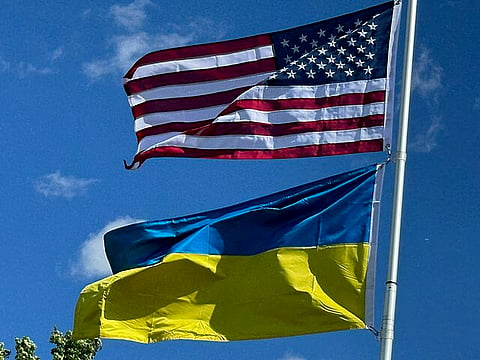

The United States has decided to provide Ukraine with intelligence to support long-range strikes on Russian energy infrastructure, a move the Kremlin condemns as a serious escalation that involves NATO's direct infrastructure in the conflict. This shift in policy coincides with the U.S. considering a Ukrainian request for Tomahawk cruise missiles, a step Russia warns will trigger a firm response.
The decision to provide targeting intelligence for strikes deep inside Russia marks the first known policy change President Donald Trump has signed off on since hardening his rhetoric toward Moscow. This new intelligence will focus on energy infrastructure such as refineries, pipelines, and power plants, with the stated aim of depriving the Kremlin of revenue used to fund its war effort. The United States is also actively pushing its NATO allies to provide similar support to Ukraine.
This policy adjustment follows Trump's recent social media statement that Ukraine is in a position to "fight and WIN all of Ukraine back," a significant shift from his earlier stance that Kyiv would have to cede territory to end the war. Analysts view the intelligence sharing as a tangible outcome of this new, harder line, intended to pressure Russia into negotiations by intensifying economic costs.
Russian officials have responded to these reports with a mixture of dismissal and stern warnings. Kremlin spokesman Dmitry Peskov stated that the use of NATO and U.S. infrastructure to collect and transfer intelligence to Ukraine is "obvious," framing it as part of ongoing Western involvement. However, he downplayed the potential impact of new weapons systems, asserting there is "no magic weapon for the Kyiv regime" that could alter the fundamental dynamics of the war.
Regarding the potential supply of Tomahawk cruise missiles, Peskov emphasized that this would require "a very in-depth analysis," questioning whether American personnel would be involved in launching or targeting the missiles. He warned that such a move would trigger a "new serious round of tension" demanding an adequate response from Russia. Echoing this sentiment, Foreign Minister Sergei Lavrov stated that even the provision of Tomahawks would not change the situation on the battlefield.
The U.S. strategy explicitly targets Russia's oil and gas exports, which remain the single most important source of revenue financing the war. Ukrainian long-range drone strikes have already successfully targeted a significant portion of Russia's oil refining capacity, leading to domestic fuel shortages and forcing the government to consider costly imports.
Concurrently, the Trump administration is pursuing a broader diplomatic campaign to dry up funding for Russia's invasion by pressing other nations to stop buying Russian oil. This includes imposing additional tariffs on imports from India and lobbying Turkey and Hungary to diversify their energy supplies. The G7 group of major Western nations has also pledged to increase pressure on countries that continue to increase their purchases of Russian oil.
While this pressure has yielded some results, such as Hungary signing a deal to buy liquefied natural gas from France's Engie, the country has also made it clear that it has no plans to drop its existing, much larger supply contracts with Russia.
The consideration of providing Ukraine with Tomahawk cruise missiles represents a significant potential escalation. With a range of up to 2,500 km (1,550 miles), these missiles could theoretically put Moscow and most of European Russia within reach if fired from Ukrainian territory.
However, the feasibility of such a transfer is in doubt. Sources familiar with the matter suggest that current Tomahawk inventories are largely committed to U.S. Navy needs, making the delivery of these missiles to Ukraine unlikely. Instead, the U.S. may look into providing other long-range weapons or allowing European allies to supply them. This aligns with the ongoing development of Ukraine's own domestic long-range strike capabilities, such as the Flamingo cruise missile, though production quantities remain limited.